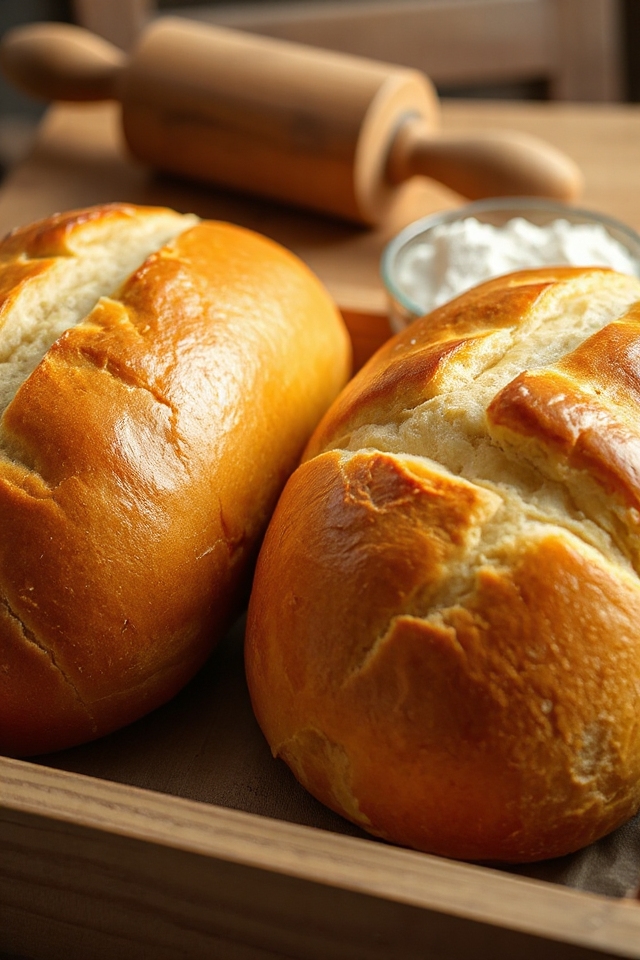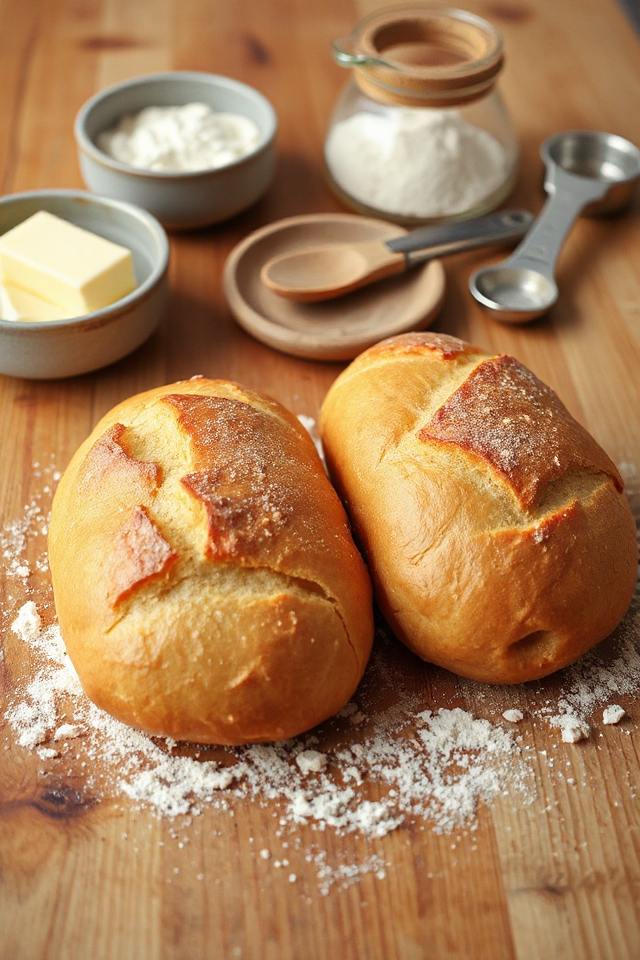Why You’ll Love This Amish White Bread Recipe
When you take a bite of this Amish White Bread, you’ll instantly understand why it’s a beloved staple in many homes.
The texture is soft and fluffy, making it perfect for sandwiches or simply slathered with butter. It has a subtle sweetness that balances beautifully with savory toppings.
Plus, it fills your kitchen with an irresistible aroma as it bakes. I love how this recipe brings a sense of warmth and comfort, and it’s surprisingly easy to make.
Once you try it, you’ll find yourself craving this homemade goodness again and again, making it a go-to recipe for gatherings and cozy nights in.
Ingredients of Amish White Bread
When it comes to making Amish White Bread, gathering the right ingredients is the first step towards that fluffy, golden masterpiece. You’ll want to make sure you have everything on hand before you plunge into the mixing and kneading. Trust me, you don’t want to be halfway through and realize you’re out of sugar—talk about a baking disaster.
So, let’s get started with the essentials.
Here’s what you need for this delightful recipe:
- 1/4 ounce dry yeast
- 1/2 cup warm water (for dissolving the yeast)
- 1/3 cup sugar
- 2 teaspoons salt
- 2 cups water (for the dough)
- 2 1/2 tablespoons shortening
- 6-7 cups all-purpose flour or bread flour
- 1/8-1/4 cup butter (for that lovely buttery finish)
Now, before you rush off to the grocery store, let’s chat about a few considerations regarding these ingredients.
For starters, the type of flour you choose can make a difference in texture. All-purpose flour will give you a softer bread, while bread flour can add a bit more chewiness.
Then there’s the yeast—make sure it’s fresh! Old yeast can lead to sad, flat bread that just won’t rise.
And don’t forget about the butter at the end; it’s not just for flavor but also gives that beautiful, golden sheen to your loaves.
How to Make Amish White Bread

Now that you’ve gathered your ingredients, it’s time to roll up your sleeves and get into the heart of making Amish White Bread.
First things first, take that 1/4 ounce of dry yeast and dissolve it in 1/2 cup of warm water. This step is essential because it wakes up the yeast, which is like giving it a little caffeine boost.
While that’s bubbling away, grab a large bowl and combine 1/3 cup of sugar, 2 teaspoons of salt, 2 cups of water, and 2 1/2 tablespoons of shortening. Just mix it all together until it’s well combined—this is your base, and it’s going to help create that lovely soft texture we all crave.
Once you’ve got that mixture ready, it’s time to stir in the yeast mixture. You’ll want to do this gently, as if you’re coaxing the yeast into its new home.
Now, for the fun part: gradually add in the 6 to 7 cups of flour. Don’t rush this step; you want to form a soft dough. As the flour gets added, you might find yourself thinking, “Wow, this is getting sticky!”—and it will.
Turn that dough onto a floured surface and knead it until it’s smooth. This part can get a bit messy, but embrace it. It’s part of the joy of baking.
After kneading, toss the dough into a greased bowl, cover it, and let it rise for about 2 hours. You might want to kick back and watch a show during this time, because once it’s ready, it’s going to be a glorious sight.
When the dough has risen, you’ll want to punch it down—yes, literally! This helps release the air bubbles and redistributes the yeast.
Divide the dough into two portions and shape them into loaves. Place them in greased 9 x 5 loaf pans and, just for fun, prick the tops with a fork. It’s like giving them little air vents.
Now, let them rise again until they’re higher than the pans, which should take another couple of hours. Preheat your oven to 375 degrees while you wait.
Once they’re ready, pop them in the oven for 25 to 30 minutes. Your kitchen will start to smell heavenly, and you might find yourself doing a little happy dance.
After cooling for ten minutes, rub that 1/8 to 1/4 cup of butter all over the tops for that irresistible sheen.
Let the loaves cool completely on racks, and then enjoy the fruits of your labor. You did it!
Amish White Bread Substitutions & Variations
After you’ve mastered the art of making Amish White Bread, you might find yourself wanting to experiment a bit.
You can swap out some all-purpose flour for whole wheat flour for a nuttier flavor and added nutrition. If you’re feeling adventurous, try adding herbs like rosemary or thyme to the dough for a savory twist.
For a touch of sweetness, mix in honey instead of sugar. Want a richer taste? Use melted butter instead of shortening.
And if you love a hint of spice, consider adding a dash of cinnamon. The possibilities are endless—get creative and enjoy!
Additional Tips & Notes
While making Amish White Bread can be a rewarding experience, a few additional tips can help guarantee your loaves turn out perfectly every time.
First, verify your yeast is fresh; expired yeast can ruin your bread. I also recommend using a kitchen scale for measuring flour—accuracy matters!
When kneading, don’t rush; work the dough until it’s smooth and elastic. If your kitchen is cool, consider placing the dough in a warm spot to help it rise.
Finally, rub the butter on the loaves right after baking for a lovely finish. Enjoy the delicious aroma and flavor of your homemade bread!
